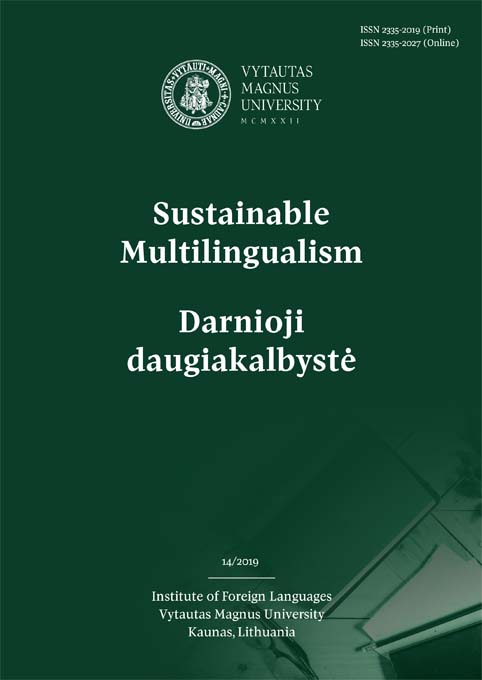Reklama kaip kultūros atspindys užsienio kalbos mokyme
Advertising as a reflection of culture in foreign language teaching
Author(s): Rima Sabaliauskienė, Gintarė Gelūnaitė-Malinauskienė, Jūratė AndriuškevičienėSubject(s): Language studies, Education, Foreign languages learning, Sociolinguistics, Marketing / Advertising, Globalization
Published by: Vytauto Didžiojo Universitetas
Keywords: commercials; Spanish language; German language; Lithuanian language; intercultural communication; foreign language;
Summary/Abstract: The ability to communicate in several foreign languages, recognize and understand cultural differences and effectively interact in a multicultural environment has become vital in the modern world that faces intense globalization processes. Linguistic and intercultural competences are essential not only for establishing personal relationships with foreigners but also for developing successful business relationships. At the Institute of Foreign Languages at Vytautas Magnus University (hereafter - VMU IFL), Spanish and German languages remain in the top five of the most popular languages among 30 languages available to students. These languages are chosen not only by Lithuanian students but also by foreign students who come to study in Lithuania. Most exchange students who come to study at VMU choose to study the Lithuanian language as well. In addition to the development of language skills in a learning process, the new concept of language teaching / learning, market trends and the great interest of students and the public in languages lead to the development of topics related to culture and intercultural communication and efforts to reveal peculiarities of the new culture in the common European and native country context. Based on the theories of different authors on the connection between culture and language and intercultural differences, the article discusses the possibilities of using commercials (video recordings of advertisements) to get acquainted with the culture in foreign language lectures. A comparative analysis of examples selected from commercials available online and revealing certain cultural aspects of the three countries (Spain, Lithuania and Germany) that allow to understand the target culture better is presented in this article. The aim is to reveal how a teacher, knowing the theories of cultural differences, can use commercials for the development of students’ linguistic and also cultural and intercultural competences.
Journal: Darnioji daugiakalbystė
- Issue Year: 2019
- Issue No: 14
- Page Range: 160-195
- Page Count: 36
- Language: Lithuanian

